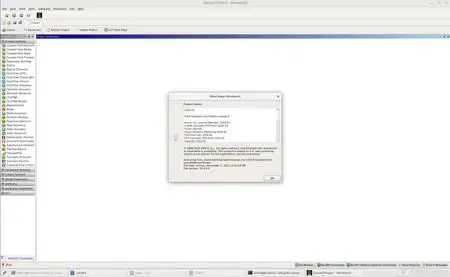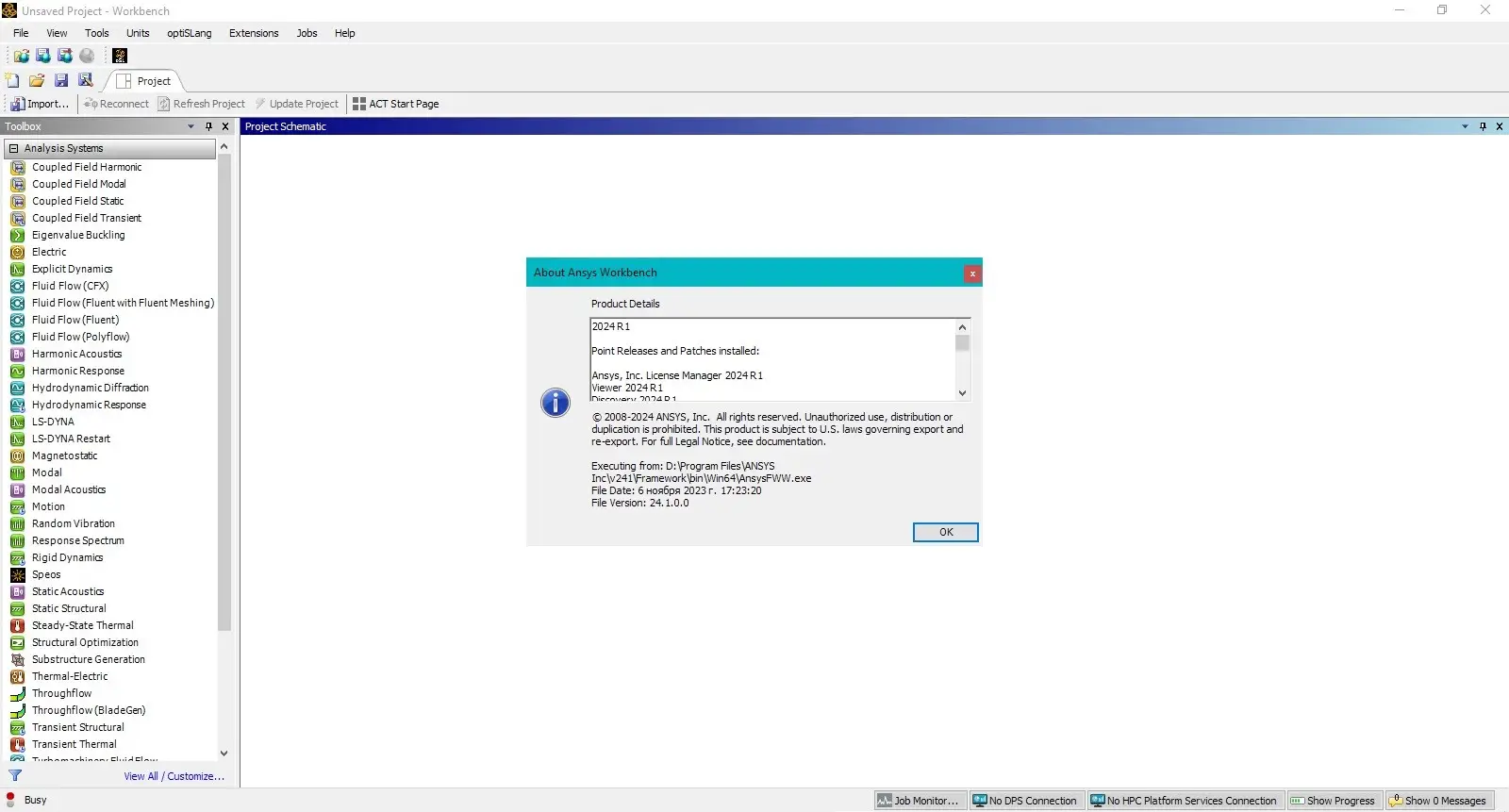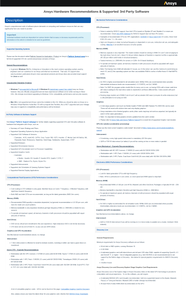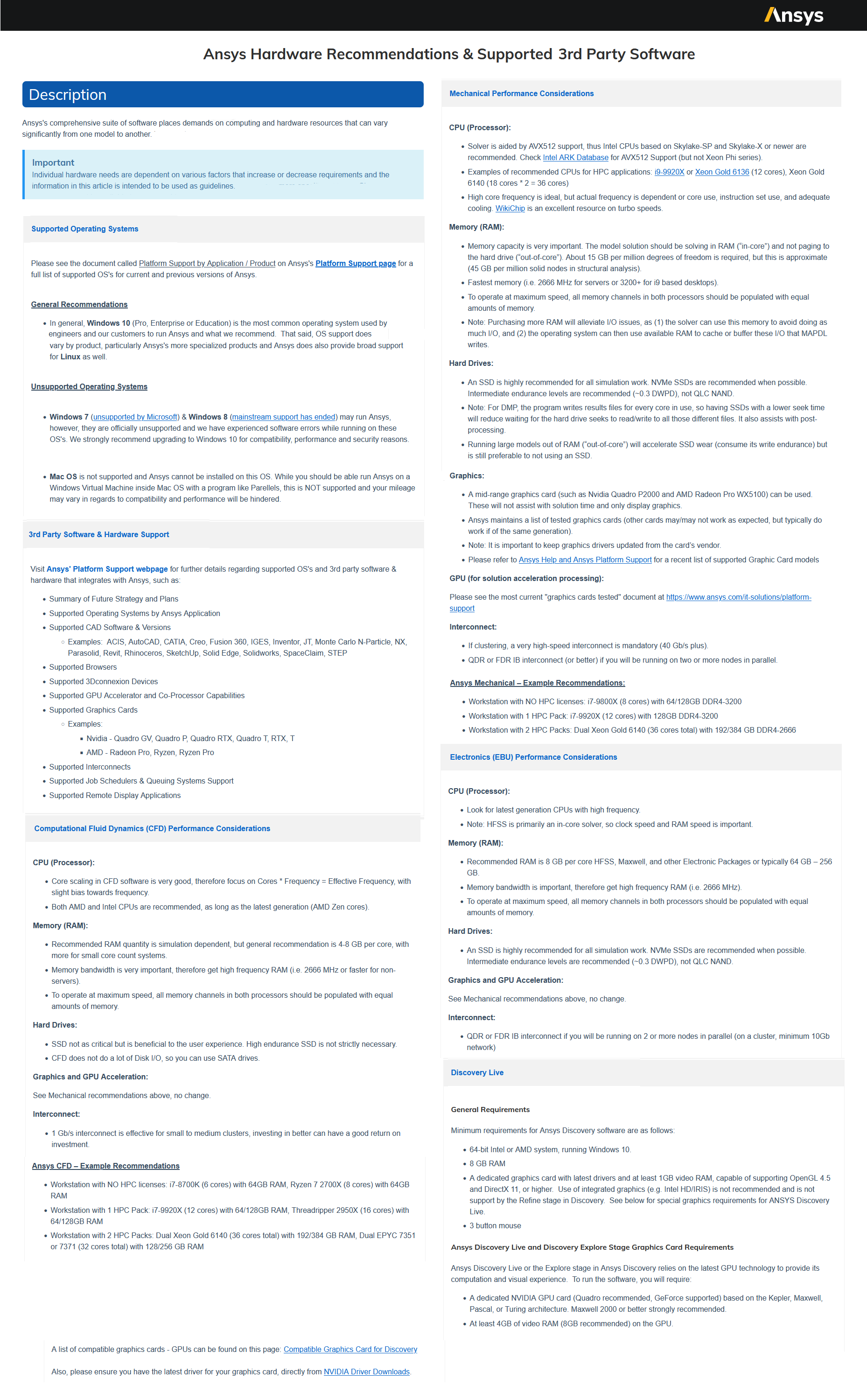ANSYS Products 2024 R1 | 48.4 Gb
Languages Supported: English, Deutsch, Français, 日本語
Languages Supported: English, Deutsch, Français, 日本語
ANSYS has announced the release of Ansys Products 2024 R1, a comprehensive software suite that spans the entire range of physics, providing access to virtually any field of engineering simulation that a design process requires.
Ansys Products 2024 R1 Global Release Notes
1. Advisories
The Microsoft Defender Antivirus program in Windows Security, on Windows 10 and 11, will scan all executables associated with the Fluent and Mechanical products and can cause some performance issues. A workaround consists in adding an exception in Windows Defender for the impacted Ansys executables.
2. Compatibility with Previous Releases
Backwards Compatibility: Ansys 2023 R1 was tested to read and resume databases from the following previous versions: 2021 R1, 2021 R2, 2022 R1, and 2022 R2. Note that some products are able to read and resume databases from releases prior to 2021 R1. For those products that cannot directly read an earlier database in 2023 R1, first resume it in a supported version and then resume that database in 2023 R1. Upward/Forward Compatibility: No previous release has the ability to read and resume a database from a more recent release.
3. Documentation
Ansys Help cannot be launched from Firefox on Linux in a DCV environment for the products CFX, En-Sight, and Polyflow.
4. Verification Manual
The Verification Manuals for the following products were updated at 2024 R1:
4.1. Mechanical APDL Verification Manual
4.1.1. New Test Cases
No test cases were added for 2024 R1.
4.1.2. Modified Test Cases
No test cases were modified for 2024 R1.
4.1.3. Removed Test Cases
No test cases were removed to the 2024 R1 Mechanical APDL Verification Manual.
4.2. Workbench Verification Manual
4.2.1. New Verification Test Cases
No new test cases have been added to the Workbench Verification Manual. LS-DYNA test cases are no longer listed with under the Workbench Verification Manual. You can find them in the section below, LS-DYNA Verification Manual (p. xvi).
4.2.2. Removed Verification Test Cases
No Workbench verification test cases have been removed.
4.3. LS-DYNA Verification Manual
LS-DYNA Fluids Test Cases
- VM-LSDYNA-FLUID-005: The Poiseuille Flow - Steady 3D Laminar Flow in a Pipe: This test reproduces a three-dimensional, steady, incompressible laminar flow in a pipe: the Poiseuille flow. The purpose of the test case is to validate the pressure jump between the pipe inlet and outlet.
- VM-LSDYNA-FLUID-006: Steady 3D Laminar Flow around a Cylinder in a Channel: This test case reproduces a three-dimensional, steady, incompressible laminar flow around a cylinder inside a channel. The purpose is to validate the drag and lift force coefficients and the pressure difference between the front and end points of the cylinder.
- VM-LSDYNA-FLUID-007: Unsteady 3D Laminar Flow Around Cylinder in a Channel: This test case reproduces a three-dimensional, unsteady, incompressible laminar flow around a cylinder inside a channel. The purpose of the test case is to validate the maximum drag and lift force coefficients and the pressure difference between the front and end points of the cylinder.
LS-DYNA EMAG Test Cases
- VM-LSDYNA-EMAG-007: 2D Axisymmetric Inductive Heating: A heated coil is wrapped around a cylinder. The coil carries a sinusoidal current. The goal is to determine the temperature at the bottom center of the cylinder where the temperature sensor is located in the experiment.
- VM-LSDYNA-EMAG-008: Magnetostatic Force Calculation: This TEAM 20 problem is a non-linear, magnetostatic, 3D model designed to verify magnetostatic force calculations. The model allows you to investigate surface magnetic force calculations obtained by the LS-DYNA monolithic solver in magnetostatic cases under different current excitations. The goal is to determine flux densities at specific surface points within the model as well as the magnetostatic force for different values of ampere-turns.
The features listed here are just some of the highlights of Ansys Products 2024 R1 release. You can check out all the features in Ansys_Release_Notes.pdf
Ansys offers a comprehensive software suite that spans the entire range of physics, providing access to virtually any field of engineering simulation that a design process requires. Ansys simulation gives engineers the ability to explore and predict how products will work — or won’t work — in the real world. It’s like being able to see the future, enabling engineers to innovate as never before. Industry leaders use Ansys to create complete virtual prototypes of complex products and systems – comprised of mechanical, electronics and embedded software components – which incorporate all the physical phenomena that exist in real-world environments.
Ansys Workbench
Ansys is the global leader in engineering simulation. By offering the best and broadest portfolio of engineering simulation software, we help solve the most complex design challenges and create products limited only by imagination. Founded in 1970, Ansys is headquartered south of Pittsburgh, Pennsylvania, U.S.A.
Owner: Ansys
Product Name: Ansys Products
Version: 2024 R1 *
Supported Architectures: x64
Website Home Page : www.ansys.com
Languages Supported: multilanguage
System Requirements: Windows & Linux **
Size: 48.4 Gb
ANSYS_2024R1_WINX64_DISK1-SSQ
ANSYS_2024R1_WINX64_DISK2-SSQ
ANSYS_2024R1_WINX64_DISK3-SSQ
ANSYS_LOCAL_HELP_2024R1_WINX64-SSQ
ANSYS_PRODUCT_PDF_DOC_V241-SSQ
ANSYS_2024R1_LINX64_DISK1-SSQ
ANSYS_2024R1_LINX64_DISK2-SSQ
ANSYS_2024R1_LINX64_DISK3-SSQ
ANSYS_LOCAL_HELP_2024R1_LINX64-SSQ
ANSYS_PRODUCT_PDF_DOC_V241_LINX64-SSQ
ANSYS_2024R1_WINX64_DISK2-SSQ
ANSYS_2024R1_WINX64_DISK3-SSQ
ANSYS_LOCAL_HELP_2024R1_WINX64-SSQ
ANSYS_PRODUCT_PDF_DOC_V241-SSQ
ANSYS_2024R1_LINX64_DISK1-SSQ
ANSYS_2024R1_LINX64_DISK2-SSQ
ANSYS_2024R1_LINX64_DISK3-SSQ
ANSYS_LOCAL_HELP_2024R1_LINX64-SSQ
ANSYS_PRODUCT_PDF_DOC_V241_LINX64-SSQ
Ansys's comprehensive suite of software places demands on computing and hardware resources that can vary significantly from one model to another. This article provides some high-level recommendations for purchasing computing hardware for simulation purposes. Factors that will determine the optimal computing hardware for your needs include:
Please visit my blog
Added by 3% of the overall size of the archive of information for the restoration
No mirrors please
Added by 3% of the overall size of the archive of information for the restoration
No mirrors please











